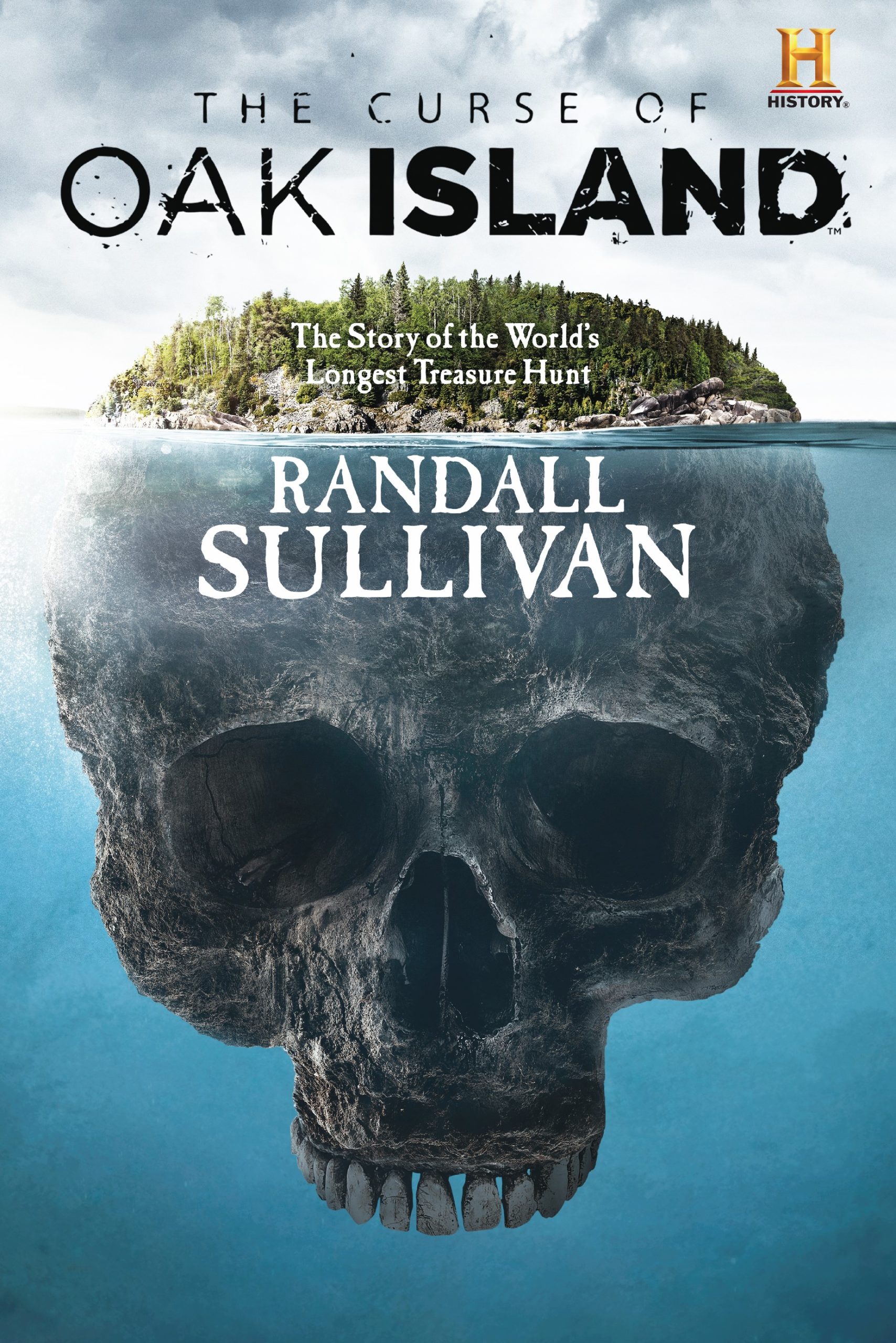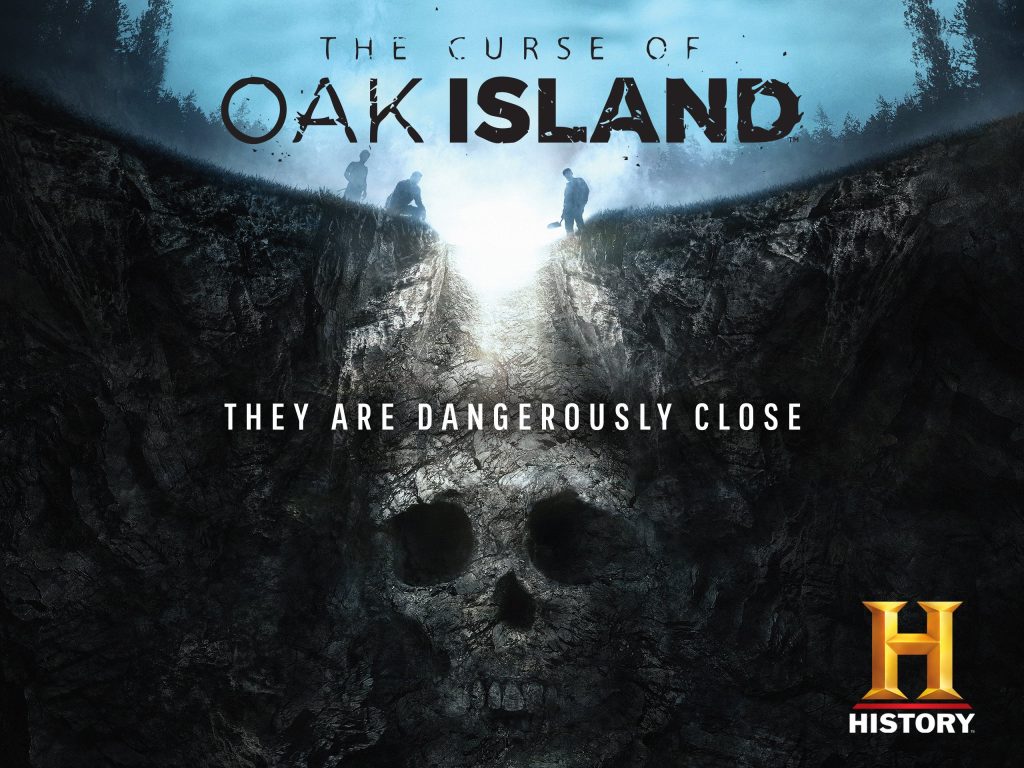The reality-television hit series called “The Curse of Oak Island” has continuously been renewed every year by History Channel since it premiered in 2014. The appeal of hidden treasure adventures never ceases to captivate the viewers’ imagination. Many love to talk about it, but only a few would have dared to search for it like the Lagina brothers. Cynics, on the other hand, believed that there’s no buried treasure on the island, and everything was just a real estate marketing hype. The interest in it increased over the years as the treasure was associated with a curse, which was a perfect combination for those who get excited with treasure hunts and the history behind them. No treasure has been found yet, but there have been too many clues, possible traps and coincidences that are difficult to overlook.
What is the Oak Island Treasure?
In most of the literature found about the Oak Island Treasure, it was believed to have been a mystery that was started over 200 years ago.
https://www.instagram.com/p/CW4WS3OjDoU/
There has been much speculation about its origins, but no one could claim that they were facts, or purely a result of someone’s overactive imagination; legends and stories do get watered down or exaggerated over the years. Here are some of the most talked-about theories of the origins of the Oak Island Treasure:
The Bard had a hand in it
William Shakespeare, the famous English playwright, was said to be Francis Bacon in real life as claimed by the devoted Baconians. For some reason, his followers introduced the Shakespearean authorship hypotheses in the mid-19th century, and asserted that it was Francis who wrote most of Shakespeare’s plays. The original manuscripts were never found, and the Baconians believed that they were buried in an underground vault somewhere in Oak Island along with his valuables. Some coincidences made them assume that the Baconian claim was true, such as the traces of mercury found during the early treasure hunt expeditions on the island, as Francis mostly used mercury in preserving documents.
It was also documented that Francis’ understudy, Thomas Bushnell, was very knowledgeable in recovering flooded mines. It didn’t help that Francis was initiated as a member of the Knights of Templar, which was also a group highly connected to the treasure legend.
Marie Antoinette’s Crown Jewels
The excesses in the courts of Louis XVI and Marie Antoinette so angered the people in France that they led to the 1789 French, Revolution. It was rumored that when Marie Antoinette was fleeing Paris, she instructed her loyal maid to pack up the crown jewels along with many of her valuables and board the ship en route to North America. She was said to have hidden them on an island in Nova Scotia, with the help of some of their trusted guards of the Royal Army. The jewels were never found, so people assumed over the years that it was buried in Oak Island.
Captain Kidd buried his loot on Oak Island
A buried treasure legend wouldn’t be complete without a famous pirate involved in it. The theory that Captain Kidd’s legendary treasure from the 17th century was the buried treasure in Oak Island started when he claimed to have hidden it somewhere that only he and Satan could ever find.
https://www.facebook.com/CurseofOakIsland/photos/3300500986831167
It was said that all of his loot was buried in the Money Pit, and that the cunning pirate placed many safeguards such as booby traps to confuse and prevent people from recovering it. This theory became more convincing when a dying sailor who was part of the pirate’s crew, confessed on his deathbed that around £2 million was buried on the island.
Knights Templar, Ark of Covenant, and the Holy Grail
One of the most popular theories on the Oak Island Treasure legend was that the Holy Grail, the Ark of the Covenant, and the wealth that the Knights Templar amassed over the years weas all buried on the island. The members were spared from paying taxes by the sitting Pope back in 1139, so that the Templars could focus on doing holy missions back then. That special privilege made them wealthier, so when they were disbanded, many people tried to look for their amassed wealth, but no amount of torture of the arrested members yielded any positive result. Those Holy relics were still waiting to be found, although given the time frame this theory is the most unlikely, that is, many years before expeditions ‘discovered’ North America, or the voyages of Leif Erikson were accepted as factual.
The search for the buried treasure in the early years
1795 – Daniel McGinnis and friends found the Money Pit
Oak Island has been the subject of many treasure-hunting expeditions in the past, because of an incident that happened back in 1795. There was this Nova Scotia teen named Daniel McGinnis who was intrigued by some strange lights he saw on the island from his house on the mainland. He then requested two of his friends to help him investigate it, and what they found was a 13-foot depression in the ground that was surrounded by loose soil, which was an indication that it had been recently disturbed. Naturally, the boys were curious about it and began to dig, and found a circle of stones about two feet down, less than a meter. It was getting ‘curiouser and curiouser’ when at 10 feet they found a platform of wooden timbers fitted on the sides of what seemed to be a pit. They continued digging for another 10 feet, and found another platform. However, they stopped digging as they didn’t have the tools to go beyond 20 feet as it was getting dangerous; it has since been called the Money Pit.
Onslow Company treasure expedition in the 1800’s
The discovery of the Money Pit became public and those who heard about it speculated about buried treasures. Onslow Company was the second group documented to resume digging in the pit in 1802. They discovered charcoal and coconut fibers, which only prompted them to dig some more, as coconuts couldn’t be found within 900 miles of Nova Scotia, well over 1,000kms. At 90 feet down, they found a rectangular embedded stone slab but they couldn’t understand the markings. At that time, everyone dismissed it as something that was inscribed mistakenly. They continued to dig, and when they reached 98 feet, it felt that it was some sort of a treasure vault since it sounded like a hollow container. They stopped digging for the night and when they came back the next day, the pit was filled with 60 feet or almost 20 meters of water. The Onslow Company crew believed that they’d triggered a booby trap. Nothing came out of it, and so they stopped digging permanently.

The Truro Group treasure expedition in 1849
Since stories about failed treasure expeditions were retold from one generation to another, the legend of Oak Island Treasure persisted through the years. In 1849, another group of treasure hunters referred to as the Truro Group went to the Money Pit and started digging. They successfully managed to get the water out of the hole, securing the walls before they drilled into what they all believed was the vault. It was reported that they discovered three small golden chain links after drilling into layers and layers of loose metal and wood. However, the bottom of the pit collapsed and it was filled with water once again. They all assumed that the buried treasure was even further down.
Encouraged by the golden chain links, they went on to dig some more, and discovered a flood tunnel that connected the pit to a man-made cove about 500 feet away from it. From further inspection, they found five rock-lined floodgates from the Smith’s Cove which were combined in the other end into a single drain that lead to the pit.
They tried to intercept the water by creating shafts but weren’t successful, so they finally gave up the search.
The 2014 Treasure Expedition – Lagina Brothers and a team of experts
Unlike the past treasure hunt expeditions, the activities of the newest group of treasure hunters were chronicled via the reality-TV show, “The Curse of Oak Island.” It all started when Rick Lagina showed his brother Marty an article about the Oak Island Treasure from an old edition of a Reader’s Digest magazine. They became interested in the tale of booby traps and buried treasure at the age of 11, and when their father showed them more articles about it in their teenage years from a Wall Street Journal, their interest became an obsession; the mystery of the buried treasure was a constant table conversation during family holidays.
The boys’ interest never waned and when an opportunity for them to buy a part of the Oak Island came, even if they were already in their 40’s, they immediately grabbed it. They had to go through various adversities before they were able to purchase half of the island.
They worked with Dan Blankenship who owned the other half of the island and who was already hunting for the treasure years before they even met. They joined forces, and invited other believers along with experts to start their journey. Discovery Channel found out about it, and the first episode was aired on 5 January 2014. Since then, they’ve relentlessly hunted for the buried treasure.
Things found in Oak Island that could have been part of the buried treasure
The ninth season of the reality-TV show “The Curse of Oak Island” premiered in November 2021 – of course, the treasure hunters are yet to find the buried treasure. Not finding anything didn’t mean there’s absolutely nothing on the island. In fact, they found many interesting objects that inspired them to continue exploring and digging; here are some of them, and their significance to the Oak Island treasure:
Stone Slab embedded marking translations
As mentioned, a stone slab with embedded markings was found during the Onslow Company expedition, and most of the people at that time believed it wasn’t something to be excited about.
https://www.facebook.com/CurseofOakIsland/photos/3268883779992888
However, some believed it was a secret code but weren’t able to find someone to translate it. In 1860, it was decoded by a language professor from the faculty of Nova Scotia’s Dalhousie University, and his translation was ‘Forty Feet Below Two Million Pounds Are Buried.’ In the 1970’s, another translation surfaced, deciphered as something about a Coptic Christian warning people not to forget their duty to the Lord. There were those who refuted the existence of any markings on the stone, and some even doubted the authenticity of the translations.
A tiny piece of parchment
It was reported that those who led the expedition in 1897 found a very small piece of parchment printed with letters, “vi.” The object was sent to Harvard University in recent years so it could be authenticated by experts in the field. It was proven authentic, but no one could accurately say that it was part of the buried treasure or just one of the remnants of the past inhabitants of the island some even speculated that it might come from the original manuscripts of William Shakespeare.
We are on the hunt tonight!
Don't miss an all new episode of The Curse of Oak Island, Tuesdays at 9/8c. pic.twitter.com/lsKVrooRtF
— Curse of Oak Island (@CurseOfOak) January 5, 2022
Garnet Brooch
In 2017, the Lagina crew found a garnet brooch with a 500-year-old red gemstone, and which was featured in the fifth episode of the “Curse of the Oak Island Treasure.” It was Gary Drayton, a metal-detecting expert, who discovered it somewhere north of the island using a handheld device but it was Rick Lagina who dug it out from the ground. The rear part was the first to be seen, followed by the front of the brooch with the red stone a few minutes later. Initially, they all thought it was ruby, but after thorough inspection, it turned out to be a 12-faceted 500-year-old Rhodolite Garnet. Speculations arose that it was part of Marie Antoinette’s jewels.
Medieval Cross resembling those used by the Knights Templar
Gary exclaimed to one of the Lagina brothers, ‘We might have just made history here, Rick.’ In season six of the TV show, the treasure hunters found a lead medieval cross in the Smith’s Cove area, similar to those used by the Knights Templar. It was probably one of the biggest finds as it could suggest that members of the Knights Templar were able to successfully reach North America many centuries ago.
They had it tested at the University of New Brunswick through laser abrasion, and discovered that it wasn’t from North America. The team brought the lead cross to the German Mining Museum and had it tested by a geochemist, Tobias Skowronek. It didn’t match any deposits that were used from the 15th to 17th centuries, but when it was tested with those from the medieval era, it found a match. The result corroborated the belief that some members of the Knight Templar went to Scotland and Oak Island carrying with them the amassed treasure of the group.
Human bone fragments
In one of the boreholes at 160ft, 50 meters, around what was believed to be the Money Pit area, the Lagina crew found two bone fragments that they believed were human. They had them examined through a series of tests so they could be properly identified. Dr. Timothy Frasier from the Department of Biology at St. Mary’s University in Halifax concluded that the bones were from European and Middle Eastern lineages. It was more evidence of the popular supposition that the Knights Templar went to Oak Island to hide their treasure from their enemies.

Mysterious gold coins
In the fourth season of the “Curse of the Oak Island Treasure,” the whole crew became excited as one of the treasure hunters announced that he found what seemed to be a gold coin. The mere mention of the words, ‘Gold Coin,’ was enough for the team who heard it to pause for a few moments. It had markings on the side of the golden disc but no one could read it. When it was tested later, it was indeed made of gold, but the dimple at the center of the back of the disc indicated that it was more of a gold-plated button than a coin, believed to be from the uniforms used by the British Army in the 18th century. Most of the people in the crew as well as the viewers lost interest, but it wasn’t worthless because it opened up a lot of questions as to what the British Army was doing in Oak Island.
https://www.facebook.com/CurseofOakIsland/photos/2931614583719811
Why was it so hard to find the Oak Island Treasure?
With all the modern technology that the 21st century could offer, most people assumed that the Oak Island Treasure should be easy to discover. However, after nine seasons of the TV show “The Curse of the Oak Island Treasure,” there was no substantial proof to come out that could accurately prove 100% that the treasure was real. Many believed it was due to the curse associated with the treasure. Somewhere along the way after the legend of the treasure was born 200 years ago, a curse about it was whispered over the years. They said that it would take seven deaths before the treasure would be revealed, probably due to the frustrations of the first failed treasure expeditions. There have been six deaths associated with the treasure hunt, and the people now believe that when the seventh death occurs, then the buried treasure will be found.











Leave a Comment